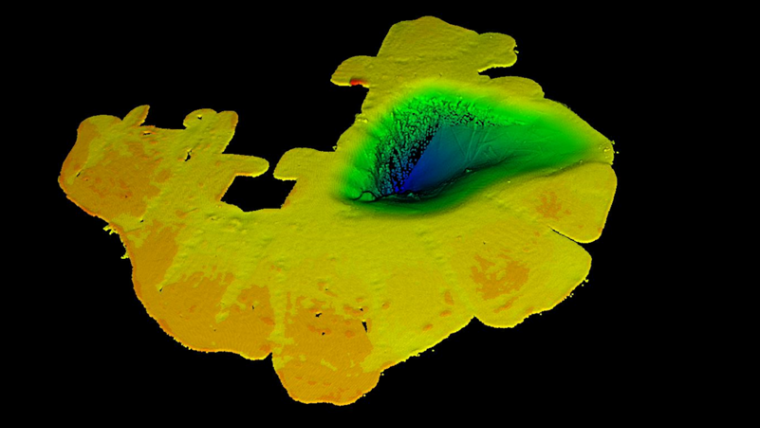Survey of a Hot Natural Spa with a Compact and Lightweight Multibeam Echosounder
The Site: Lake Hévíz
Lake Hévíz is located in Hévíz, Hungary, near the western end of Lake Balaton. It is the largest thermal lake in the world that is available for swimming (47,500m2 in area). The flow of water is very strong and the water in the lake is completely replenished every 72 hours. Its minimum depth is 2 metres, reaching a maximum depth of 38 metres, exactly at the point where the hot thermal water comes out to the surface.
In 1953, the first divers reached the bottom but were unable to enter the spring cave. In 1972, two divers discovered a narrow gap at the bottom of the lake, 60–80cm high and 2–3m wide, which turned out to be the entrance to the spring cave.
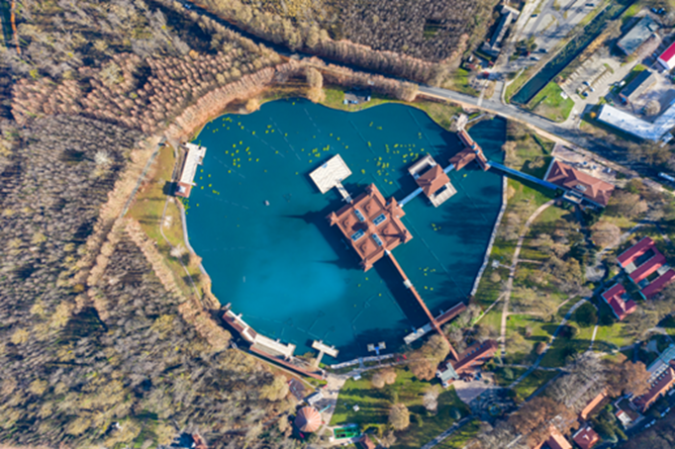
Finally, a diving team entered this narrow gap in 1975, where they had to overcome 39.5°C heat and a strong current of about 30 thousand litres of water per minute. After this narrow gap, they found a cave of 17 metres in diameter. There, they found the secret of Hévíz: two springs. On the eastern side, they found a colder spring (26.3°C), and on the western side a hot spring (41°C). The amount of the hot water discharged is nine times that of the cold spring, so when they mix the resulting temperature is 39.5°C.
The Challenge: Extreme Conditions and Restrictions
The fauna and flora (which is dominated by water lilies) are unique in Lake Hévíz, due to the temperature and chemical composition of the water, which contains carbonic acid, calcium, magnesium, hydrogen carbonate, reduced sulfuric compounds and oxygen in solution. As a result, the lake has been a well-known balneological site since the end of the 19th century. Unsurprisingly, the site is also interesting for many scientific fields.
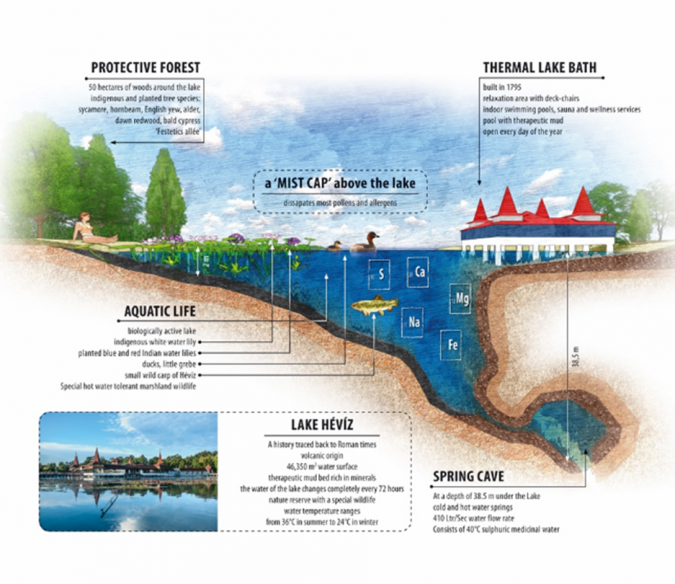
However, making any kind of hydrographic or bathymetric survey is difficult, due to the challenges of the lake. These challenges include the temperature, the strong water flow from the spring cave, the high number of spa visitors, and the local restrictions (boat traffic in spa opening times is not allowed, and only electric boats can be used). Therefore, only a single beam echosounder had been used for a simple survey in the past. In fact, no detailed bathymetric map had been made prior to 2020.
The Solution: The Compact and Lightweight Baywei MBES
As a consequence of the Covid-19 pandemic, Lake Hévíz Spa was closed from mid-November 2020. This gave local researchers the opportunity to conduct some detailed underwater research. Because of the restrictions of the site, they were looking for a highly compact, lightweight, but still very productive multibeam echosounder that could be carried in a small, low-power electric-driven boat. They wanted a solution that would allow a single person to operate both the survey system and the small boat.
The new Baywei M5 was a perfect fit. Its sonar head includes 256 beams and a 130° swath echosounder system, a highly precise IMU and a sound velocity probe. All of this in an 18cm x 18cm x 16cm and 3.5kg (in air, and 1.1kg in water) housing. The small electric box in the boat includes the dual antenna RTK GNSS, and the easy-to-use data collection utility application that even works on a tablet.

Running the Survey: Straight Lines Impossible!
Anyone running a bathymetric survey with MBES tries to run parallel lines. In this project, however, this was impossible. Because of the water lilies and the long bars (used as handrails by resting spa clients), the whole survey had to be done with continuous manoeuvring.
As the Baywei M5 is a system designed for single person operation (in a very small zodiac, or even in an ASV/USV), it was easy to control the boat and operate the system at the same time.
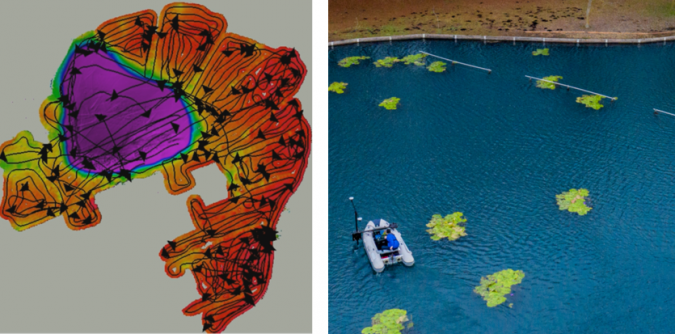
Results: From Extremely Shallow to Rapidly Changing Depth
Our survey unfolded the nature of this lake: the majority is exceptionally shallow (0.5–1.5m), turning to an almost 40m-deep hole with very steep walls. The ‘crater’ floor and wall are covered with mud, which moves due to gravity and the ‘washing machine’ effect of the two springs at the bottom. As a result, the lake is in continuous motion, and we expect it will need to be resurveyed from time to time.
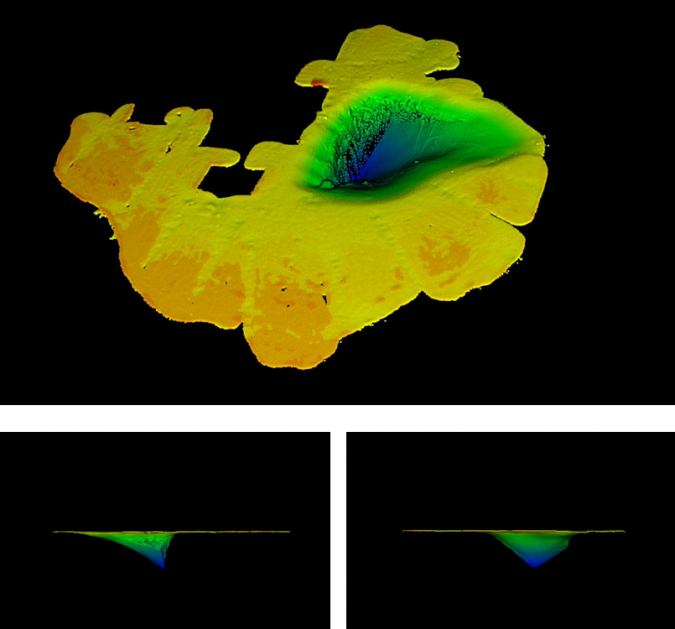

Value staying current with hydrography?
Stay on the map with our expertly curated newsletters.
We provide educational insights, industry updates, and inspiring stories from the world of hydrography to help you learn, grow, and navigate your field with confidence. Don't miss out - subscribe today and ensure you're always informed, educated, and inspired by the latest in hydrographic technology and research.
Choose your newsletter(s)
